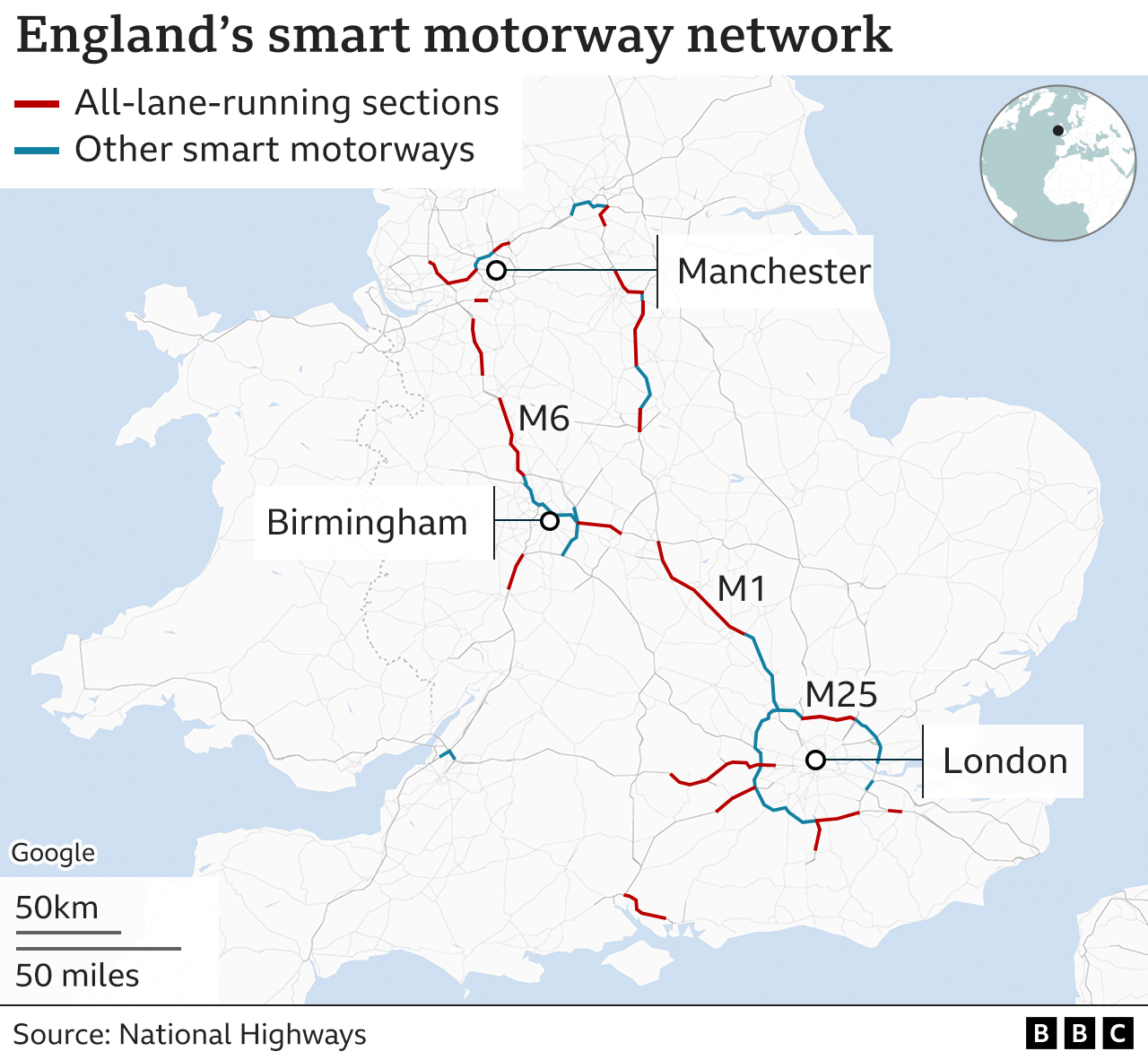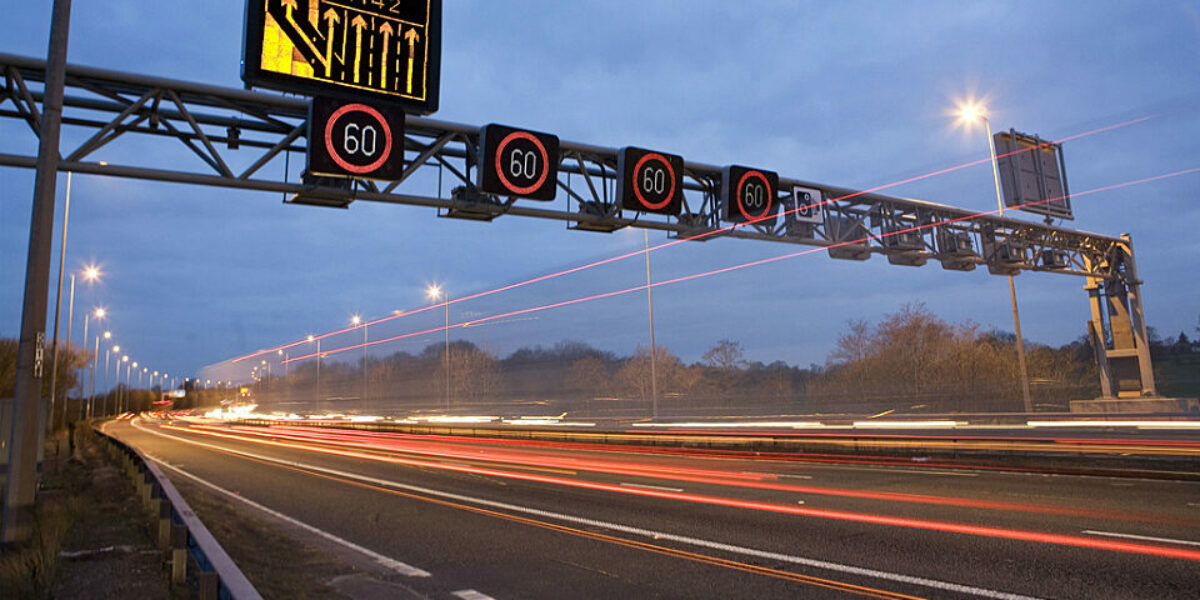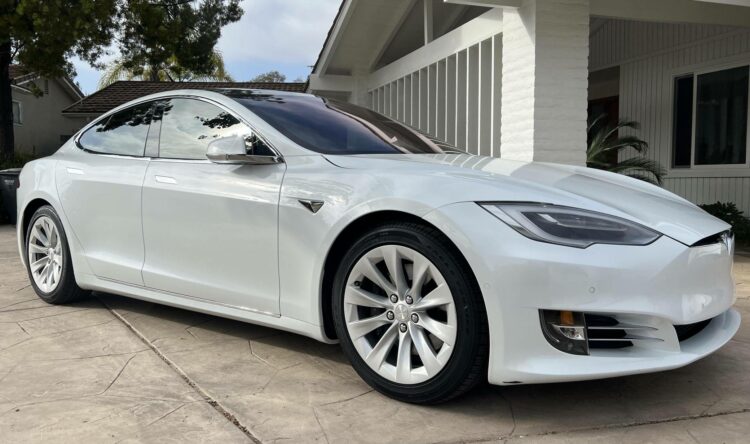Failure of smart technology
Motorway safety compromised by power failures and technology
Despite repeated government assurances and substantial new investments, the safety of ‘smart’ motorways continues to be a recurring issue, raising serious questions.
In a new investigation by BBC’s Panorama programme, the technology used breaks down on a regular basis.
Whistleblowers from within National Highways, who are in charge of the infrastructure, claim the issues are chronic and dangerous.
Not clever
Figures obtained by Panorama reveal that hundreds of incidents occur during the year.
These breakdowns leave crucial safety equipment out of action, putting motorists at an alarmingly high risk.
A traffic officer featured on the programme airing tonight who regularly works on the network says he no longer considers it safe.
However, National Highways – the agency in charge of smart motorways – denies the claims.
Slowing down
Last year, the government announced that it was halting the rollout of new smart motorways due to cost and safety concerns.
The cancellation put a stop to 14 planned schemes.
Smart motorways were developed to create more capacity and cut congestion on roads without spending money and causing disruption in building new ones.
Critics, including coroners, road safety professionals and the police, claim it has led to road deaths.
These tend to occur when cars break down. Camera and radar technology monitoring the lanes are supposed to trigger live lane closures to prevent traffic from running into stranded vehicles. Both in cases when the technology has failed and even when it has worked, vehicles have been hit by moving traffic using the same lane as the stranded vehicle.
Similar investigations in the past, including the Daily Mail in 2021, found the technology to be out of date and faulty, cameras not working or facing the wrong way, and a lack of effective monitoring.
Public fear and coroner reports led the government to review and eventually halt building more smart motorways.
The government also insisted it was investing in updating and repairing equipment on existing smart motorways.
Reviewed
Existing smart motorways—which make up 10% of England’s motorway network—will remain and undergo a previously announced safety refit to create 150 more emergency stopping places and improve technology.
Prime Minister Rishi Sunak, who pledged to ban smart motorways during his leadership campaign, said: “All drivers deserve to have confidence in the roads they use to get around the country”.
There are 193 miles of what’s called “all-lane-running” motorway where the hard shoulder has been permanently removed to provide an extra lane.
The hard shoulder is sometimes open to traffic on another 63 miles of smart motorway, and it has been retained on a further 140 miles of the network.

What is safe?
National Highways says the latest data shows that “smart motorways are our safest roads”.
It is spending £900m on technology to make the existing network safer, but it does not plan to restore the hard shoulder.
Figures released following Freedom of Information requests by Panorama show that between June 2022 and February 2024, there were 397 incidents when smart motorways lost power, making it difficult to detect when a vehicle has broken down. These outages sometimes lasted days:
- For five days in July 2023 there were no signs, signals, camera or radar at junction 18 on the M6
- In September 2023, there were no signs, signals or CCTV for five days at junction 22 of the M62
- In December 2023, there were no signs, signals, sensors or CCTV for three and a half days at junction 6 on the M5
According to the BBC report, the worst problems were in the most recent period covered by the FOI figures.
Over six months leading up to February 2024, there were 174 power outages.
That equates to almost one a day.
One outage on the M4 meant sensors and signals were out for 11 days.
Blind faith
There are also problems with the radar detection systems.
National Highways’ figures show that in 2022, the radar system designed to spot stationary vehicles also experienced 2,331 faults.
The average length of the fault was more than five days.
While National Highways says the radar detects 89% of stopped vehicles, it still means that one in 10 are not spotted.
At least 79 people have been killed on smart motorways since they were introduced in 2010.
Seven coroners have called for them to be made safer in the past five years.






